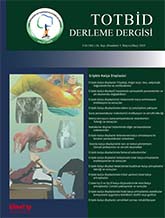
Adult hip dysplasia can lead to intra-articular pathologies due to anatomical and functional mismatches of the hip joint. This condition results from inadequate acetabular coverage of the femoral head, causing damage to the labrum, cartilage, and subchondral bone. Hip arthroscopy is an effective treatment for femoroacetabular impingement (FAI) and labral pathologies; however, its success is limited in patients with severe dysplasia. In [borderline hip dysplasia (LCEA 18°-25°)], although successful outcomes can be achieved with arthroscopy, patient selection is of critical importance. Arthroscopic approaches, including labral repair and capsular plication, have been associated with favorable results in this patient group. However, in cases with more pronounced dysplasia and instability, periacetabular osteotomy (PAO) should be preferred. Periacetabular osteotomy corrects structural abnormalities and helps preserve long-term joint health. The accuracy of the initial surgical choice is a key determinant of long-term patient satisfaction. Therefore, treatment planning should be tailored to individual patient characteristics, and surgical options must be carefully evaluated.